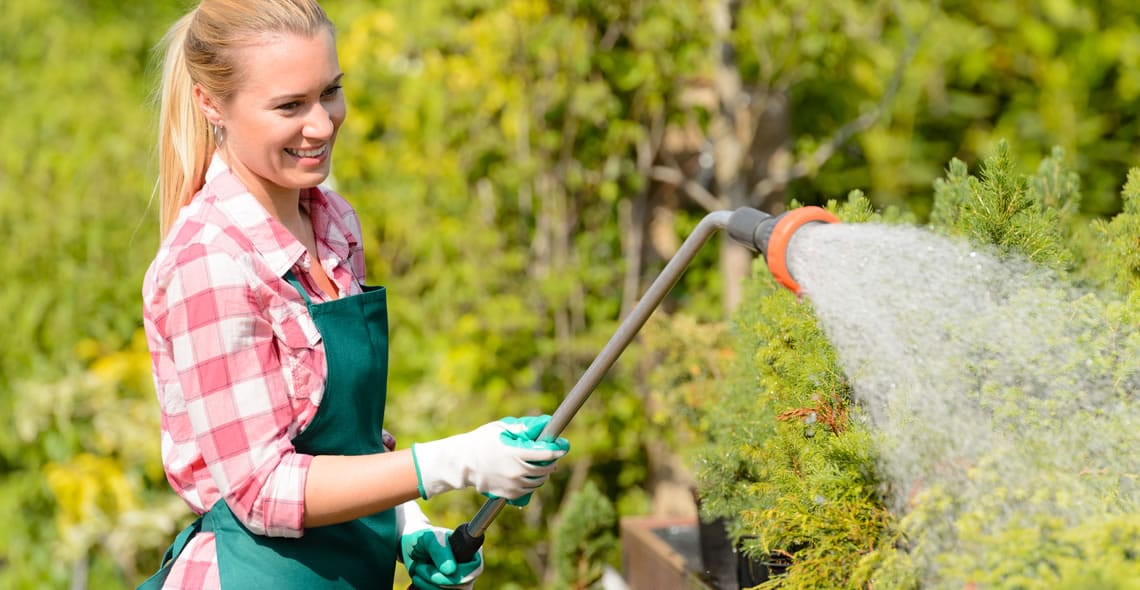Beautiful lawns aren’t a product of nature but are created through careful nurturing and maintenance, and fertilizers are a vital ingredient for that. The same way people and animals need nutrients to grow, plants also need nutrients to thrive. When these nutrients are lacking, it’s necessary to fertilize to boost adequate growth and performance.
Choosing the right lawn fertilizer starts with knowing what nutrients are lacking in your soil, determined by a soil test. Lawns that aren’t fertilized entirely rely on the land for all their nutrients and don’t turn out great.
What Is Lawn Fertilization?
Lawn fertilization involves the use of materials or mixtures to improve one or more of the necessary plant nutrients. Fertilizers are essential to the health and vitality of your grass.
Fertilizing your lawn will give you that healthy, lush, green lawn. The most vital ingredient in a lawn’s nutrient is nitrogen, and each type of grass needs diverse amounts of nutrients for maximum growth and performance. Regular fertilization and maintenance will ensure you enjoy a healthy and beautiful lawn.
The three primary macronutrients in fertilizers are; Nitrogen (N), Phosphorus (P), and Potassium (K).
Fertilization Selection for Lawn
The selection of the lawn fertilizer by the lawn owner is a matter of choice. There’re different types of fertilizers found in local gardening shops the landowner can choose from. Fertilizers can be labeled into two: organic and synthetic fertilizers.
Slow-Release Fertilizers
It’s highly recommended you use a slow-release nitrogen fertilizer for your grass. This type of fertilizer promotes steady, uniform growth of your lawn. It’ll ensure nitrogen and other nutrients needed for the growth of your tufts are adequately provided. One of the beauties of using slow-release fertilizers is that you don’t need to fertilize regularly.
Fast-Release Fertilizers
Just like the name implies, fast-release fertilizers are absorbed quickly by the grass. It adds nutrients to the soil and helps the grass green up quickly. They’re easily affordable but carry a high risk of burning your lawn. Fast-release fertilizers don’t last long; therefore, it needs to be frequently applied.
Lawn-Starter Fertilizer
This type of fertilizer is meant to help new grass seed to grow. It’s very high in phosphorous, which reinforces and strengthens the roots of the fresh grass.
Weed and Feed Fertilizer
This fertilizer type has the dual purpose of serving both as a fertilizer and as weed control. There’re different types of this fertilizer, so ensure you get the best fit for your lawn. Ensure not to use this fertilizer on new grass as it often contains herbicides that impede seed germination.
Winterizer Fertilizer
This fertilizer improves lawn nutrients in preparation for winter. It’s usually applied in the late fall. Use a winterizer fertilizer that contains lots of nitrogen if you have a cool-season grass. Also, a winterizer low on nitrogen but high on phosphorous and potassium is best for warm-season greens.
Soil Types and Recommendation for Lawn
The soil is the base for any beautiful and healthy lawn; it houses the nutrients your grass needs to thrive. Many grass problems are a result of unhealthy soil. Ideally, a healthy soil constitutes sandy, silt, clay, and loam soils in the right proportions.
Loam soil retains moisture but also drains well when the lawn is watered. Its ability to trap nutrients and allow air-flow makes it the ideal soil for your yard.
Conclusion
If you notice your lawn lacks nutrients, turns yellow, or wilts, it’s time to apply fertilizer. The beauty of the yard is in its lush greenness. Just as we need nutrients to survive, plants also do. You need to determine the type of fertilizer your lawn need and how best to apply it. Do you need help with fertilizing your lawn? Our experts are here to help you.


